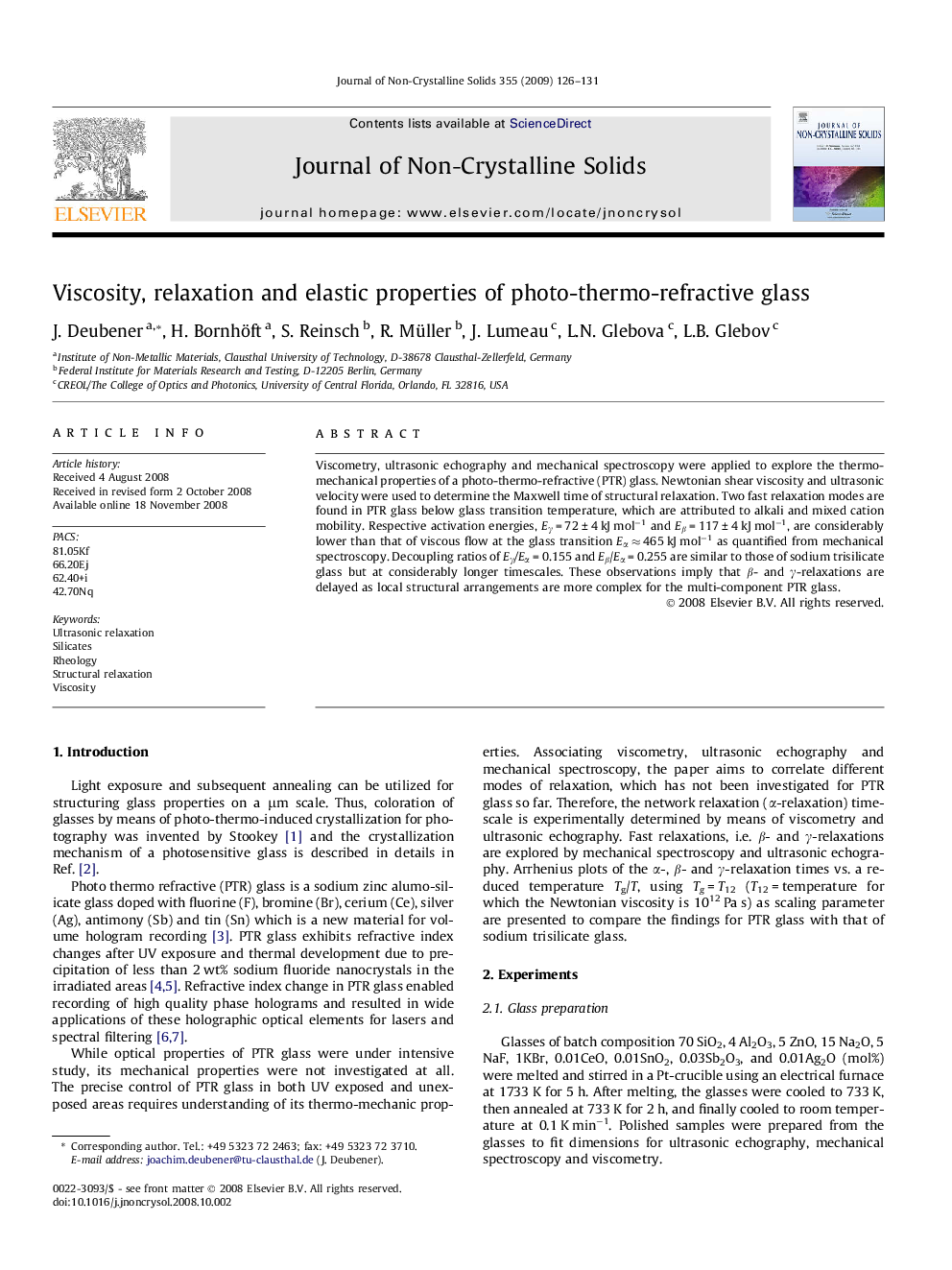| Article ID | Journal | Published Year | Pages | File Type |
|---|---|---|---|---|
| 1483660 | Journal of Non-Crystalline Solids | 2009 | 6 Pages |
Viscometry, ultrasonic echography and mechanical spectroscopy were applied to explore the thermo-mechanical properties of a photo-thermo-refractive (PTR) glass. Newtonian shear viscosity and ultrasonic velocity were used to determine the Maxwell time of structural relaxation. Two fast relaxation modes are found in PTR glass below glass transition temperature, which are attributed to alkali and mixed cation mobility. Respective activation energies, Eγ = 72 ± 4 kJ mol−1 and Eβ = 117 ± 4 kJ mol−1, are considerably lower than that of viscous flow at the glass transition Eα ≈ 465 kJ mol−1 as quantified from mechanical spectroscopy. Decoupling ratios of Eγ/Eα = 0.155 and Eβ/Eα = 0.255 are similar to those of sodium trisilicate glass but at considerably longer timescales. These observations imply that β- and γ-relaxations are delayed as local structural arrangements are more complex for the multi-component PTR glass.
